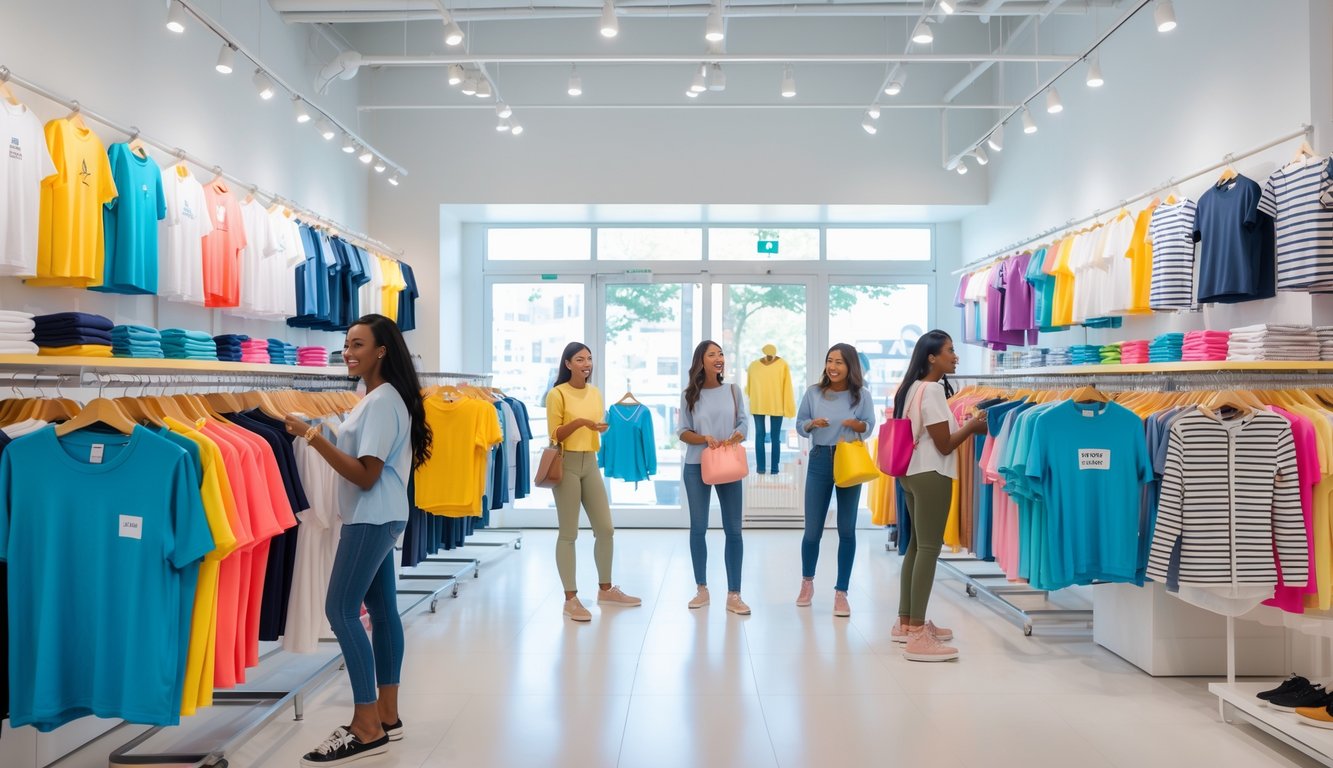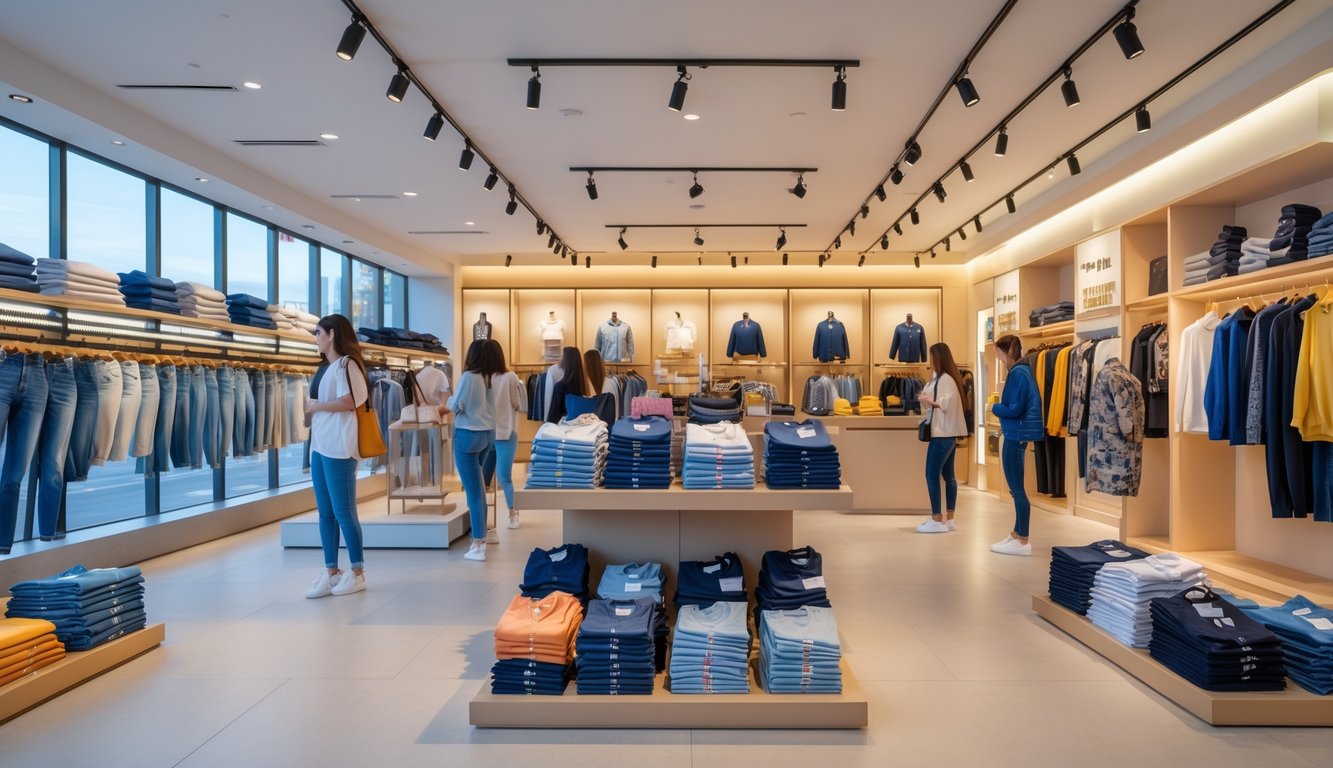
So here’s what’s actually wild: I keep opening sales dashboards expecting to see those overpriced, overhyped designer pieces finally having their moment, but nope—everyone’s just grabbing plain denim shorts and basic tees. It’s not just my place; literally everywhere, even fashion editors are suddenly obsessed with high-street basics and cult staples. People don’t care about logos right now. My inbox? Full of questions about “practical” stuff, not status symbols. Last night, this New York personal shopper DM’d me: “Clients want soft cotton shirts, walkable loafers, nothing with a gold stamp.” It’s almost boring.
Vogue ran a trend roundup and now I can’t stop thinking about it, because suddenly machine-washable dresses are beating out “It-bags”—I checked the numbers, and those so-called essentials outsold designer stuff by 30% this week. I lost sleep restocking plain knits and Vuori shorts (thanks, random Vogue feature). Why do I even bother with high-end inventory? And then there’s the SPF 30 drama—dermatologists say it’s enough, but who’s actually reapplying? Not me.
Skipped breakfast (again) to chase a sneaker restock, only to find three emails from coworkers asking if this is just a weird blip or if we’re missing some “trend intelligence.” Except, it’s not a blip. Influencers already switched to simple, affordable statement pieces before the rest of us caught on. Go look at Who What Wear’s celebrity tracker. This whole pattern is chaos—mass-market lounge suits trending with designer heels? Didn’t see that one coming. My recommendations haven’t looked this normal in forever.
The Surge of Everyday Style Picks
No warning, just—boom—basic denim, aggressively average white sneakers, suddenly shoving aside logo sweatshirts and fancy silk dresses. Even my friend who collects designer trench coats admitted her cart’s all mainstream casual now. It’s like, did everyone just get tired of flexing?
What Sparked the Shift in Consumer Preferences
Everyone blames the economy, but honestly, it’s not just that. Scroll through Instagram or TikTok and you’ll see this weird pressure to prove you’re “real” by wearing cropped tees and baggy jeans. Social media micro-trends? They explode in minutes. I read a report saying micro-trends last two, maybe three months now. That’s it. Buyers at mid-tier chains keep telling me, “People aren’t chasing names, they’re chasing a vibe.” Is that code for “I want to look cool but not try too hard?” Maybe.
It’s not just a look—high-end department store staff admit customers want “comfy basics,” not labels. Alexa Chung said something about jeans outlasting any logo, and, annoyingly, she’s not wrong. That stat about 10,000+ users engaging more with affordable brands than designer ones? Yeah, it’s from this market analysis on fast-fashion copycats. Go check—don’t just take my word for it.
How Everyday Fashion Outshone Designer Labels
No one I talk to seems sure they even want the “luxury experience” anymore unless it’s for the flex. Ever eyed a $2,000 coat in a glass case and then bought a $45 sweatshirt at checkout? That’s the mood. Data from early 2025 says classic white tees and loose pants outsold both logo streetwear and Paris runway pieces for the first time in years.
There’s still a cult for anything “limited edition,” but most shoppers want stuff that survives laundry, not dry cleaning. Fashion insiders at Vogue Business basically admit brands get skipped if they chase micro-trends too hard. Practicality isn’t cool, but whatever—my favorite retail manager said customers spend ages comparing two nearly identical hoodies, then buy both “because they go with everything.” Is that a trend or just indecision? Who knows.
Everyday fashion’s kind of snuck in as the default. People seem happier in whatever’s easy to throw on. Even PR reps for designer brands now push “versatility” and “approachability” like they invented the idea.
Comparing Everyday Styles and High-End Name Brands

Two racks over, a basic cotton tee ($15, maybe less on sale) outsells an LV pullover. “You can’t wear a monogram to soccer practice,” a stylist once snapped at me. She had a point. Social feeds bombard me with luxury, but most days I’m just trying to find something that survives the washing machine.
Defining Everyday Style Versus Luxury Fashion
Why do people act like “everyday style” is an insult? It’s jeans, soft knits, sneakers—stuff you don’t have to baby or worry about. Luxury brands? They’re all about exclusivity—Louis Vuitton, Gucci, Chanel. Most people can’t name the designer of their sweatpants, but everyone’s got an opinion on a $2,000 bag. Sometimes the fancy stuff’s stitched better, sometimes not at all, which honestly makes me question everything.
I went down a rabbit hole with this marketing analysis. Luxury’s all about rarity and status, but “everyday” brands just move inventory faster. Low-key brands win on fit and easy laundry, while luxury houses obsess over public launches. If I see another “limited-edition” collab, I might lose it. Value isn’t just cash—a $20 Oxford and a logo tee, swapped at the same meeting, nobody cares unless the tag’s sticking out.
Price Point Impact on Sales Dynamics
Prices feel like a dare sometimes. Designer slides for $800 or practical loafers for $50? Guess which ones sell out. My accountant texted, “Stop expensing cashmere joggers.” So, yeah, price matters. Everyday stuff flies off shelves because it’s not a financial gamble.
Last week’s online sale? Plain crewnecks from budget brands vanished before I could even add them to my cart. Market data’s relentless: lower prices mean more people buy, especially when they want it now (see 18 High-Quality Clothing Brands That Are Affordable—it’s a lot). High-end brands try to make scarcity cool, throwing private launch parties like velvet ropes will magically boost sales.
Prestige can’t keep up with TikTok hauls. My neighbor’s kid wears the same $12 tee every day. I mean, why not?



